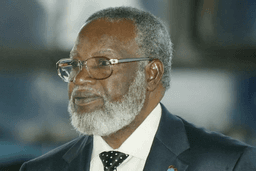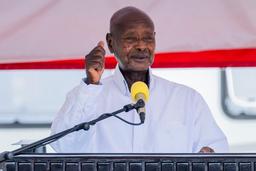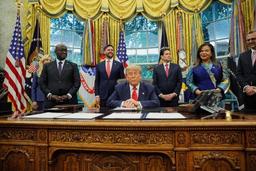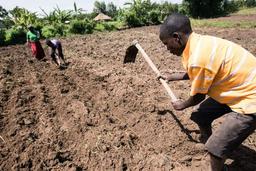Burkina Faso
Burkina Faso also known as "Land of the Upright People" or "Land of the Honest People" is a landlocked country in West Africa, known for its rich culture, diverse ethnic groups, and history of political instability. It's a low-income nation heavily reliant on agriculture, though gold exports have become increasingly significant. The country faces challenges related to poverty, security, and humanitarian needs.


24.07 Million

West Africa

274,000 sq km

GMT

African French, English

West African CFA Franc (XOF)

Islam and Christianity

President Ibrahim Traore
Brief
Burkina Faso faces a complex and challenging situation marked by ongoing conflict, widespread displacement, and severe humanitarian needs. The security crisis is particularly acute in the Est and Centre-Est regions, where violence has forced large numbers of people to flee their homes, severely impacting livelihoods and food security. Humanitarian organizations, including the World Food Programme, are working to provide critical support such as food assistance and access to essential services, though many areas remain hard to reach. The crisis has placed immense pressure on vulnerable households, with urgent needs for aid, protection, and long-term resilience strategies.
Despite these challenges, Burkina Faso is also experiencing signs of progress. The economy is projected to grow, fueled by extractive industries and agricultural production. The government is implementing initiatives to improve connectivity, particularly in rural areas, by deploying new telecom infrastructure to expand internet access. Efforts are also underway to improve market access and support local farmers. Politically, the country remains under the control of a military junta and has withdrawn from ECOWAS, reflecting ongoing instability. However, collaboration between local and international actors is contributing to humanitarian response and development, with a focus on strengthening local capacity and resilience.
Burkina Faso National Anthem





Cultural Life
Cultural milieu
Burkina Faso's culture is a vibrant tapestry woven from the traditions of over 60 ethnic groups, including the Mossi, Bobo, Senufo, Lobi, and Fulani. These groups have coexisted for centuries, contributing to a rich cultural heritage expressed through arts, crafts, music, dance, and cuisine. Skilled artisans are renowned for their weaving, pottery, and mask-making, often tied to cultural and spiritual ceremonies. The country also boasts a dynamic film industry, with FESPACO, the Pan-African Film and Television Festival, serving as a key cultural event. Music and dance are central to Burkinabé life, not only for entertainment but also for spiritual expression, often involving traditional instruments like the balafon, djembe, and kora.
Festivals play a significant role in preserving and showcasing Burkina Faso's cultural diversity, with events such as the Festival des Masques et des Artes and FESTIMA drawing national and international attention. While Islam and Christianity are widely practiced, many Burkinabé also follow traditional animist beliefs, which emphasize harmony with nature and community solidarity. This communal spirit, encapsulated in the concept of Laafi, is a cornerstone of Burkinabé social structure. The cuisine reflects the country’s agrarian roots, featuring staples like millet, sorghum, and rice, with regional variations adding to its culinary richness. Altogether, Burkina Faso's culture is a celebration of unity in diversity, grounded in deep-rooted traditions and evolving artistic expression.





Daily life and Social customs
Daily life in Burkina Faso is deeply intertwined with its rich cultural heritage, where strong community ties and family play central roles. The majority of the population depends on subsistence agriculture, with men primarily handling farming and harvesting, while women manage household duties and engage in small-scale trading such as street food vending and soap making. Social life emphasizes cooperation and interdependence, with extended family structures where each member has defined roles. Traditional beliefs, alongside Islam and Christianity, heavily influence daily activities, social interactions, and community events.
Burkinabé culture is vividly expressed through music, dance, and craftsmanship, with weaving, pottery, and mask-making playing key roles in both cultural and religious ceremonies. Staple foods like sorghum, millet, and rice form the basis of the diet, and clothing styles reflect a blend of traditional, European, and religious influences. Festivals and public holidays unite communities to celebrate shared heritage, while respect for elders and authority figures remains a fundamental social value that guides interactions and maintains social cohesion across the country.





Cuisines
Burkina Faso's cuisine is a vibrant part of West African food culture, featuring hearty dishes based on locally grown grains, vegetables, and meats. Staple ingredients include sorghum, millet, maize, rice, peanuts and yams. Common dishes feature grilled meats like fish, goat, mutton, and beef, as well as flavorful stews made with vegetables and various leaves.
Key Dishes and Ingredients:
To: The national dish, a thick paste made from millet, maize, or sorghum flour, often served with a sauce.
Riz Gras: A one-pot rice dish with tomato paste, vegetables, and sometimes meat.
Fufu/ Foofoo: A dough-like food made from pounded cassava, yams, or plantains.
Maafe/ Yassa: Dishes featuring meat (often chicken or fish) cooked in a rich sauce.
Degue: A popular dessert made from steamed millet and milk.
Benga: Beans mixed with rice.
Baabenda: A dish featuring leaves, often with dried fish and spices.
Grilled Meats: Fish, goat, mutton, and beef are popular, often cooked with local spices.
Drinks: Bissap juice, tamarind juice, ginger juice and millet beer (Dolo) are popular.
Spices: Soumbala, chilies, ginger, and various other spices are used to flavor dishes.





Music
In 2025, Burkina Faso’s music scene thrives as a dynamic blend of tradition and innovation, centered in Ouagadougou. Key events like the Afrobeat International Festival, themed “In Motion,” celebrate African music’s evolution by showcasing both emerging and established artists and fostering creative exchange. The Kundé Awards honor outstanding Burkinabe musicians with prestigious accolades, while the Ouagadougou International Music Festival highlights cultural resilience and talent across generations. Together, these festivals emphasize Burkina Faso’s dedication to nurturing a vibrant, diverse musical heritage that connects the past with the future.
The Arts
Burkina Faso boasts a rich artistic heritage, deeply rooted in its cultural traditions. The country is renowned for its diverse tribal art, particularly masks and bronze sculptures, which are often imbued with spiritual and cultural significance. Burkina Faso also hosts prominent art and craft fairs like SIAO, showcasing its vibrant artistic community.
Traditional Arts:
- Masks: Burkina Faso is famous for its elaborate masks, used in ceremonies and dances by various ethnic groups like the Mossi, Bwa and Lobi.
- Bronze Sculptures: Burkinabe artisans are skilled in the lost wax technique for creating bronze sculptures, often depicting human figures, animals, or scenes from daily life.
- Earth Houses: The Gurunsi people are known for their unique architectural style, creating impressive earth houses decorated with geometric patterns.
- Other Crafts :Traditional crafts also include pottery, weaving, and metalwork.





People
Ethnic Groups
The dominant ethnic group in Burkina Faso is the Mossi, comprising roughly 52% of the population. Other significant ethnic groups include the Fula (8.4%), Gurma (7%), Bobo (4.9%), Gurunsi (4.6%), Senufo (4.5%), Lobi (2.4%), Tuareg (1.9%), and Dyula (0.8%).
In 2025, Burkina Faso is home to a rich tapestry of over 60 ethnic groups, each contributing to the country's vibrant cultural diversity and social landscape. The largest and most influential among these is the Mossi, who make up a significant portion of the population and are known for their historic kingdoms, traditional leadership structures, and cultural influence. Alongside the Mossi are other prominent groups such as the Bobo, Gurunsi, Lobi, Fulani, Senufo, and many more, each with their own distinct languages, customs, and traditions.
These ethnic groups contribute to Burkina Faso’s dynamic cultural identity through unique art forms, music, dance, and ceremonies that are celebrated across the country. Their traditional crafts, such as weaving, pottery, and mask-making, are integral to cultural and religious events. Despite varying lifestyles—from the pastoral Fulani to the agricultural Mossi and artisan communities—the groups coexist with a shared emphasis on community, solidarity, and respect for heritage. This ethnic diversity not only enriches Burkina Faso’s cultural heritage but also plays a vital role in shaping its social cohesion and national identity in 2025.





Religions
In Burkina Faso, the majority religion is Islam, with a significant minority of Christians and followers of indigenous beliefs. Specifically, Islam accounts for roughly 63.8% of the population, while Christianity makes up 26.3%.
- Islam: The majority of Muslims in Burkina Faso are Sunni Muslims, with a strong influence from Sufism. A small percentage follow Shia Islam and Ahmadiyya.
- Christianity: Christianity is the second largest religion in Burkina Faso. Within Christianity, Catholicism is more prevalent than Protestantism.





Settlement patterns
Urban Centers
In Burkina Faso, urban centers such as Ouagadougou and Bobo-Dioulasso are experiencing rapid population growth due to increasing urbanization. These cities account for a significant portion of the urban population, with around 60% residing in just these two areas. The growing population has led to a surge in land speculation, particularly in peri-urban zones, where demand for housing and development is rising sharply. However, this rapid expansion is outpacing the development of infrastructure and public services, resulting in uneven access to essential amenities such as clean water, electricity, and healthcare for many residents.





Rural Areas
In contrast, rural areas in Burkina Faso remain less densely populated and are largely dependent on subsistence agriculture and livestock raising. A significant portion of the population still lives in these regions, where daily life revolves around farming and survival-based economic activities. Infrastructure and services such as roads, schools, and health facilities are often limited or underdeveloped. Additionally, poverty remains widespread in rural communities, with limited access to economic opportunities and support services.





Rural-Urban Migration
The disparity in living conditions and economic prospects between urban and rural areas is driving a steady migration of people from the countryside to the cities. Rural-urban migration is contributing to the rapid growth of urban centers, intensifying pressure on housing, infrastructure, and public services in those areas. At the same time, this migration places new demands on peri-urban and formerly rural lands, leading to changes in land use patterns and further challenges related to land management and sustainable urban planning.

Demographic trends
Burkina Faso is experiencing rapid population growth, driven by high fertility rates—averaging around six children per woman—and declining mortality due to improvements in healthcare, hygiene, and sanitation. This has resulted in a predominantly young population, with over 65% under the age of 25 and a large proportion under 15, leading to a high dependency ratio that places significant pressure on the working-age population. The country’s population is growing at approximately 3% annually, more than twice the global average, and while urbanization is increasing, Burkina Faso remains largely rural. Persistent poverty and widespread unemployment further strain resources and limit economic opportunities, while the population pyramid continues to reflect the characteristics of a developing nation with a wide base and high birth rates.
Touristic Cities
Ouagadougou
This capital of Burkina Faso, is a lively city that blends tradition and modernity, offering visitors vibrant markets, rich cultural sites, and a thriving arts scene. Key attractions include the Grand Market (Marché Rood-Woko), the National Museum, the Moro-Naba Palace, the Thomas Sankara Memorial, and the Ouagadougou Cathedral. Scenic spots like the city’s reservoir lakes and nearby Laongo National Park provide natural escapes. Beyond the city, travelers can explore Tiébélé’s painted Kassena houses, the cultural vibrancy of Bobo-Dioulasso, the waterfalls and peaks of Banfora’s Cascades Region, and the desert landscapes of the Sahel, including Gorom-Gorom and Arly National Park.





Bobo-Dioulasso
Being second-largest city in Burkina Faso, is a vibrant cultural hub renowned for its rich traditions, lively music scene, and unique architecture. Located in the southwest, it offers visitors a blend of history and charm through attractions like the Grand Mosque, Old Kibidwé District, Houet Museum, and the tranquil riverside retreat of Guinguette. The Sacred Fish Pool of Dafra adds spiritual depth, while bustling markets showcase local crafts. As the musical heart of the nation, Bobo-Dioulasso captivates with traditional rhythms and cultural festivals, making it a must-visit destination in West Africa.





Banfora
Banfora, located in southwestern Burkina Faso, is a top tourist destination known for its breathtaking natural landscapes and rich cultural heritage. Highlights include the stunning Karfiguéla Waterfalls, the dramatic rock formations of the Sindou Peaks and Domes de Fabedougou, and the tranquil Lake Tengrela, where visitors may spot birds and hippos. Surrounding villages like Koro offer authentic cultural experiences, with traditional crafts, music, and farming, especially sugarcane cultivation. With opportunities for eco-tourism and scenic exploration, Banfora stands out as one of Burkina Faso’s most captivating travel spots.





Koudougou
Located about 75 km west of Ouagadougou in Burkina Faso’s Boulkiemdé Province, is a vibrant cultural center known for its traditional music and dance. Though less prominent on the tourist map, it offers unique experiences, particularly the Sacred Crocodile Pond of Bazoule nearby, where locals live in harmony with revered crocodiles believed to embody ancestral spirits. Easily accessible by road, Koudougou provides a fascinating glimpse into Burkinabé culture and traditions, making it a worthwhile stop for those exploring the region.
Accomodation
In Burkina Faso, you can find various accommodation options like hotels, guest houses, and lodges, particularly in Ouagadougou and other major cities. Popular choices include Bravia Hotel Ouagadougou, Hotel Sonia, and Le Grand Calao. When planning your stay, consider factors like location, amenities, and security, especially given the country's current safety and security situation.
Guest Houses
Burkina Faso, particularly Ouagadougou, offers a range of guest houses and accommodations catering to various budgets and preferences. Notable options include Umoja Guest House, Sarada Lodge Hotel, Maison D Hote Villy, and Villa Yiri Suma, all praised for friendly service, good facilities, and convenient locations. Bed and breakfasts like Le Nomade B&B and Villa Bobo, as well as farm stays like Ferme Samandoulogou, provide unique lodging experiences. When choosing accommodation, travelers should consider location, amenities, reviews, and budget. Due to ongoing security concerns, it’s important to check updated travel advisories before visiting.




Hotels and Resorts
Burkina Faso’s hotel and resort landscape offers a diverse range of accommodations, especially in Ouagadougou and nearby tourist areas. Luxury hotels such as Lancaster Ouaga 2000, Sopatel Silmande, and Bravia Hotel top the list, with award nominations and upscale amenities including pools and spas. Mid-range and budget travelers can find clean, comfortable stays at places like Hotel Indépendance, Hotel Central, and AG HOTEL Ouaga, typically priced between $10–80 per night. For those seeking eco-tourism or nature retreats, options like Dima Resort in Ziniaré, Les Auberges de la Forêt in Banfora, and Ranch de Nazinga provide peaceful settings outside city centers. While the hospitality scene is expanding with varied offerings for different budgets, travelers are advised to book early and stay informed on security conditions before planning their trips




Campings
Camping in Burkina Faso is gaining traction, with popular sites like Campement de Thialy, Foret Diasso, Sama Camp, and Casa Africa offering scenic views, forest settings, and basic amenities. The camping market is projected to generate US$67.57k in revenue, growing at 5.80% annually to reach US$84.66k by 2029, with 1.67k users expected and 55% of bookings made online. While camping options are expanding, including smaller sites like Baobab Campement and Auberge Asfud, safety remains a concern, as the U.S. government maintains a “Do Not Travel” advisory due to security risks. Meanwhile, events like DrupalCamp Ouagadougou and a projected 4.3% economic growth reflect ongoing development in the country, which is expected to reach a population of over 24 million in 2025.

Requirements for Visa
Documents to be submitted for your application
- Passport: A passport valid for at least six months beyond the intended stay, with at least two blank pages for entry stamps.
- Visa: Most travelers need a visa to enter Burkina Faso.
- Yellow Fever Vaccination: A certificate of vaccination against yellow fever is required.
- Proof of Travel: Details of travel arrangements, such as flight confirmations and hotel bookings, may be required.
- Visa Application Form: Completed and signed application form(s).
- Photographs: Passport-sized photos meeting specific criteria, such as size, background, and facial expression.
- Proof of Status: For example, a copy of a residence permit or work permit.
- Medical Certificate: A medical certificate may be required.
At the time of visa issuance, please provide the following documents
- Passport (valid for at least six months beyond your stay)
- Completed visa application form
- Visa fee payment receipt
- Passport-sized photographs (as per specifications)
- Travel itinerary (including flight and hotel bookings)
- Proof of accommodation (hotel reservation or invitation letter from a host)
- Proof of financial means (bank statement, sponsorship letter, etc.)
- Travel insurance (covering medical emergencies)
- Return ticket or proof of onward travel
- Visa sponsorship letter (if applicable)
Economy of Burkina Faso
Agriculture, forestry, and fishing
Burkina Faso's agriculture, forestry, and fishing sectors are seeing substantial development, driven by government-led initiatives aimed at boosting productivity, food sovereignty, and climate resilience. A nationwide agricultural campaign has distributed over $179 million worth of farming equipment, while the "Agropastoral and Fisheries Offensive 2023–2025," backed by the African Development Bank, supports sector modernization. Investments in irrigation and storage, including $23.6 million from the West Africa Food System Resilience Program, are enhancing infrastructure. The government also promotes agroecological practices and climate adaptation through programs like the Green Belt project. Despite challenges such as low rainfall, high temperatures, and limited infrastructure, agriculture remains a cornerstone of Burkina Faso’s projected economic growth.

Resources and power
Burkina Faso's mining and energy sectors are experiencing notable growth, particularly in gold production and energy diversification. Industrial gold output is projected to rise by 4% to 55.7 metric tons, driven by new projects like Soleil Resources and West African Resources Ltd.'s Kiaka mine. The state-owned mining company, Société de Participation Minière du Burkina, has also taken over two major gold mines, enhancing national control of resources. In the energy sector, the country is expanding its natural gas development, exploring nuclear options, and advancing renewable projects like the Gonsin solar plant under the Desert to Power Initiative. Investments in power infrastructure aim to boost access and reliability. Despite a projected GDP of $24.23 billion and IMF support, ongoing security threats continue to affect progress, especially in mining regions.

Manufacturing
Burkina Faso's manufacturing sector is showing signs of growth, particularly in gold mining and emerging industries, despite ongoing security and economic challenges. Gold output is projected to rise, led by increased production at the Bomboré mine and new projects by Soleil Resources and West African Resources. In parallel, a new battery manufacturing plant with a capacity of one million units annually is set to launch by year-end, signaling diversification. The government is also prioritizing the textile sector, aiming for 550,000 tons of cottonseed in the 2025/2026 season, and is promoting investment in modern industrial machinery. However, insecurity—especially in the north and central regions—continues to hinder broader economic activity. The overall economy is expected to grow at 4.2%, with inflation easing to 3% and a projected fiscal deficit of 3.3%–4.0% of GDP.

Finance
Burkina Faso's 2025 budget focuses on strengthening economic and social resilience amid ongoing security and humanitarian challenges, with major allocations to defense and security (27.76%), education (28.34%), and health (11.79%). Real GDP growth is projected to slow to 4.2% in 2025, while the fiscal deficit is expected to narrow to between 3.3% and 4.0% of GDP, supported by improved revenues from record-high gold prices and easing inflation, projected at 3.0%. The budget also emphasizes rural development and food self-sufficiency, alongside reforms in public finance management. Poverty has declined to 23.2%, driven by gains in agriculture and services. The IMF recently disbursed $32.8 million under the Extended Credit Facility, though concerns remain over outstanding IMF debt. Key risks to the outlook include terrorism, climate change, and humanitarian needs, with $279.5 million sought for emergency relief. The country is also expanding its tax base by introducing VAT on digital services.

Trade
Burkina Faso's trade outlook is shaped by strong performance in agriculture and mining—especially gold—alongside a commitment to fiscal tightening and a market-based trade policy aimed at reducing barriers. Real GDP growth is projected at 4.2%, while inflation is expected to ease to 3.0% due to moderating food prices. Major exports include gold, cotton, zinc, phosphate rock, and livestock, with Switzerland and the EU serving as top export destinations—Switzerland alone accounted for over 70% of exports in 2023. Key import partners include Côte d'Ivoire, the U.S., China, and EU countries. The country’s trade balance is set to improve, with the current account deficit narrowing to 3.4% of GDP, largely due to high gold prices. However, terrorist threats remain a significant risk to the trade and economic outlook.

Labor and taxation
Burkina Faso implemented new tax reforms and maintained comprehensive labor regulations to support economic resilience. The Finance Law expanded the tax base by introducing withholding taxes on various services and an 18% VAT on e-commerce, while also adjusting rental income tax rates and applying a reduced 10% VAT to certain hospitality and transport services. Employers contribute a 3% payroll tax and must comply with labor laws covering social security (5.5% employee contribution), annual leave (22 days after one year), and detailed record-keeping. Group dismissals require a 30-day notice, with rehire obligations if economic conditions improve within two years. Monthly tax payments are due by the 15th, with penalties for delays. The government also launched the e-TIMBRE platform for digital tax stamps. These reforms come amid steady economic growth (projected at 4.2% in 2025) driven by agriculture and gold mining, though poverty remains widespread, affecting over 5.5 million people despite recent reductions.

Transportation
Burkina Faso is prioritizing the modernization and climate resilience of its public transportation system to enhance connectivity, regional trade, and economic development. Key initiatives include the introduction of 115 new buses for safer and more accessible public transit, expansion of road and rail networks through the World Bank-supported SKBo Basin of Integration Project, and improved transport links to the new Donsin airport. The government is also deploying 800 telecom towers to bridge digital gaps in underserved areas. However, challenges such as regional insecurity, climate-related disruptions, and infrastructure vandalism pose risks to progress. Overall, these efforts aim to improve mobility, access to markets, and the quality of life for citizens.





Telecommunications
Burkina Faso’s telecommunications sector is undergoing significant expansion and digital transformation, with the government deploying 800 new telecom towers to improve coverage in underserved “white zones.” Efforts to enhance internet access and affordability include initiatives like the Digital Transformation Acceleration Project and exploring satellite options such as Starlink. Mobile money services are also advancing, particularly through Orange Burkina Faso’s platform. While 5G commercialization is anticipated by late 2027 following a planned license auction, regulatory oversight by ARCEP focuses on ensuring fair practices and addressing consumer concerns. Local initiatives like the Burkina Faso Internet Exchange (BFIX) aim to boost local content and reduce vulnerability to external disruptions. Despite progress, challenges remain in bridging the digital divide, improving affordability, and strengthening cybersecurity as the sector grows more dynamic and competitive.

Latest News in Burkina Faso
Politics
The first president of independent Namibia, Sam Nujoma, has died at the age of 95 in the capital Windhoek, the country's current leader has announced.
Politics
Ugandan President Yoweri Museveni has officially announced his intention to seek re-election in the 2026 presidential race, extending his nearly four-decade rule. Museveni, who has been in power since 1986, is once again positioning himself as the steady hand guiding Uganda through challenges. His decision has sparked mixed reactions, with supporters praising his leadership and longevity, while critics call for fresh leadership and political reform. As the nation looks ahead to the 2026 elections, Uganda braces for a heated political contest.
Politics
Peace Agreement with DRC Rwanda and the Democratic Republic of Congo (DRC) signed a U.S.-brokered peace deal aimed at ending conflict and promoting regional trade. Rwanda agreed to stop supporting armed groups like M23 rebels, though it denies involvement. Tensions remain, and President Kagame is cautious about whether the peace will last.
Wildlife
Tanzania has announced that all foreign tourists visiting Mainland Tanzania will be required to purchase a mandatory travel insurance policy upon arrival, beginning January 2026. The new regulation, issued by the Ministry of Finance on July 4, 2025, is part of the government reforms in the country’s 2025/26 financial year agenda. According to the notice, the measure will apply to all non-citizens, with the exception of visitors from countries that are part of the East African Community (EAC) and the Southern African Development Community (SADC). Citizens from these regions will continue to be exempt from the requirement.
Environment
In light of the growing food insecurity crisis across many African nations, heads of state and agriculture experts gathered in Nairobi, Kenya, this week to discuss solutions to address food shortages, especially in regions severely affected by climate change, political instability, and economic challenges. The two-day summit, titled “Agriculture and Climate Resilience: A Pan-African Strategy”, brought together government officials, NGOs, scientists, and international organizations to create a comprehensive strategy to improve agriculture, nutrition, and sustainable food systems across the continent.
Tech & Science
In 2025, Artificial Intelligence (AI) isn’t just a futuristic buzzword - it’s the secret weapon behind some of the world’s most successful content creators. From bloggers and YouTubers to podcasters and marketers, AI-powered tools are changing the way we brainstorm, write, design, and edit. If you've ever struggled with writer’s block, lacked design skills, or wished for faster content creation - AI might be your best assistant yet. Here’s how AI is revolutionizing the creative industry and how you can use it to boost your projects.





